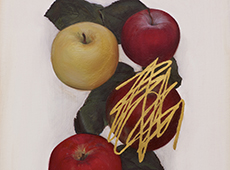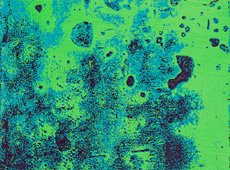If we can see the grace in quotidian landscapes and our everyday routines then perhaps we can begin to make better choices.
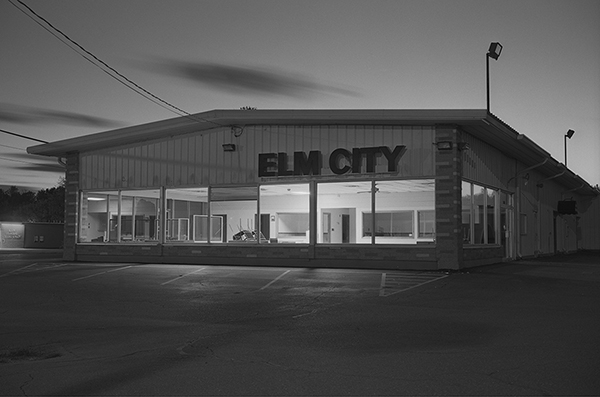
Gary Green,
BEN LISLEOne of the things that strikes me first when looking at these photos is this tension between a thoroughly human presence and the absence of actual people. So, they are human-centered, but then there is something also post-human about them, as if we were exploring a ghost town being slowly devoured by time. Where are all the people and how do they matter in this project?
GARY GREENIn one way or another, humans have always been present in my landscapes, either implied through their complete absence or more implicitly by the traces they have left — footprints, tire tracks, cleared land — as evidence of their having been there. Although I don’t think of the photographs as post-human I wouldn’t argue with that term — as I do see them as post-industrial and the scars we see left behind reflect our genuine disregard for our physical world.
But these pictures are also about the emptiness inside of ourselves; our ghosts, memories, and sadness. They are pictures about yearning and the presence (or absence) of beauty and contentment. And they are about growing older in a world that places little value on that.
“If we can see the grace in quotidian landscapes and our everyday routines, then perhaps we can begin to make better choices.”
BLThinking historically and spatially, I see both of those themes—destruction and emptiness—as not only coexistent, but mutually constitutive. For me, the sense of sadness here is linked to a lost era of proximity and density, of the walking city, of an intimacy suggested by empty factory floors, abandoned churches, and empty gyms. These social spaces are replaced by faceless warehouses, anonymous pools of asphalt, and suburban developments whose primary developmental logic seems to be spatial isolation for its own sake. In this world, television is the closest thing we have to a public space.
And so, I’ve thought myself into a hopeless cul-de-sac, where collective engagement and vision is needed to confront a landscape written by individual and nearsighted needs, but we don’t have the physical spaces that might produce this sort of engagement—places like factories, community clubs, churches, or even functioning brick-and-mortar stores. Are there spaces of hope or possibilities for change latent in these images, or are we doomed to continued isolation on the road to irredeemable catastrophe?
GG J.B. (John Brinckerhoff) Jackson wrote, “An environment is impoverished when its inhabitants cannot come together easily and agreeably, and when there are no suitable places of public assembly.” I agree with both of you in this regard. But I also think we may lack a collective will to assemble in ways we used to so the lack of these spaces is not accidental but symptomatic of our time.
I also understand the sense of bleakness these photographs evoke for some and, I suppose, my intentions encourage that response. I’d like to think that if we begin to pay closer attention to where we live we’d be ahead of where we are now. If we can see the grace in quotidian landscapes and our everyday routines, then perhaps we can begin to make better choices. I would add that our culture’s love of the new doesn’t bode well in that regard.
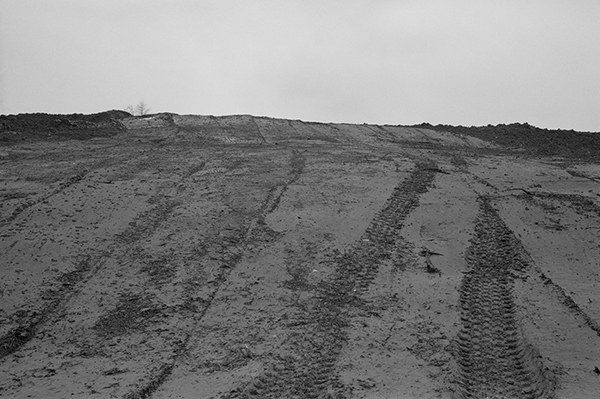
Gary Green,
BLThe way you write about these photos, it seems that they are both inward and outward facing — personal meditations on aging and time, but also provocations about how we live in relation to the physical world. This makes me wonder: how do you think about audience as part of your creative process? As a writer, I am always conscious of who I write to, but these photographs are obviously a very different kind of expression.
GGThe duality you mention comes from the way I finally think about the work but not necessarily the way I make it. I respond to the world and find subjects that interest me. I am not a conceptual artist and try not to consider what my work will mean in the end. I trust my instincts and let the work I’m making inform my process as I go along. I started photographing subjects like those we’re looking at now with Terrain Vague many years ago in graduate school. As I continued making work like this—I’ve also worked on several other projects in the interim—I came to the conclusion that they were about something more than my own feeling about the places and the resulting photographs themselves. So I think that’s where my ideas on how they might be provocations and political statements began to infuse the work. But I try not to express that overtly and prefer to let it occur as naturally, as quietly, as possible.
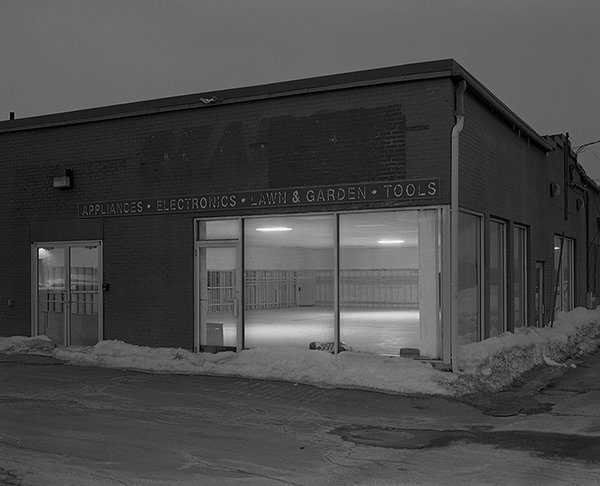
Gary Green,
As for audience, I try desperately to avoid thinking of them, whoever they may or may not be. I think if I didn’t, I would make photographs for others and would be subverting my process, muddying waters that are already difficult enough to navigate in my own already overwhelmed brain. For the most part I make objects whose worth, if there is any, will be decided after the fact. And I prefer it that way.
BLThroughout this conversation, I’ve been thinking about something geographer Peirce Lewis wrote about cultural landscapes back in the 1970s — not too long after the New Topographics exhibition. He claims that the landscape is “our unwitting autobiography” and is in fact more “truthful” as an expression of our values and aspirations than written texts because people tend to be less self-conscious about their everyday environment.
Given your examination of “terrain vague,” do you think there is more “truth” in the back side of a house than the front of it? Or, to put it another way, do our vernacular, liminal, or abandoned spaces generate more interesting or essential questions?
“For the most part I make objects whose worth, if there is any, will be decided after the fact. And I prefer it that way.”
GGThe idea of an “unwitting autobiography” certainly resonates for me. And the landscapes I’m photographing—empty lots, abandoned buildings, etc.—provide a snapshot of who we are as a society. I couldn’t say, however, that they present more truth than other places I or someone else might photograph.
Photographs, particularly, are tied up with so many signs and details that it’s very difficult to create meaning out of just one or two. They provide so much information and yet they ultimately reveal very little. I think truth comes from the genuineness of the artist’s process as well as from the relationship of one photograph to another. A body of work, a book of work, is really the only way to create a convincing thesis, whether it be artistic, political, personal or—as is often the case—all of those things.
BLThe way you talk about your photographs suggests an interdisciplinarity that I didn’t initially consider. Who would you say has particularly influenced your work in Terrain Vague? That is, whose ideas and/or techniques—I’m thinking broadly here—have shaped the way you look at and photograph landscapes?
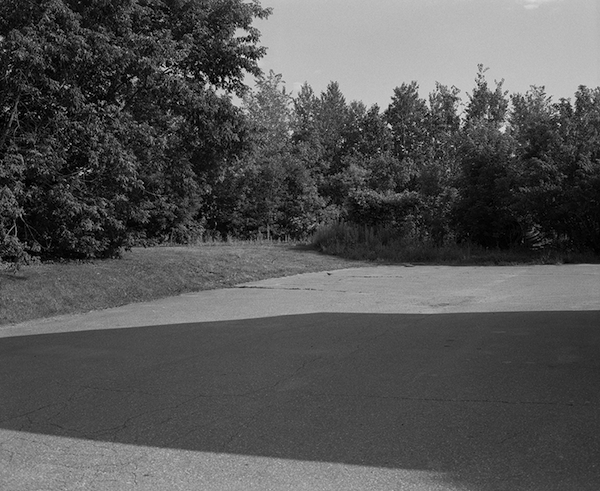
Gary Green,
GGI do look to other disciplines and art forms to inform my process and goals. For instance, I think poetry runs parallel to photography as a medium. Like a photograph, a poem can present very specific descriptions yet leave you with more questions than answers. I like Wallace Stevens, Mary Oliver, and Theodore Roetke, to name a few. Richard Ford’s trilogy about sportswriter-turned-realtor Frank Holcolmb is wonderful in the way it describes the protagonist’s personal geography alongside his physical one. Books where the landscape is central — those by Willa Cather, Sarah Orne Jewett, Barry Lopez and Kathleen Norris for example — are important to me. With photography, of course, I’d have to say that many of the New Topographics photographers informed this work, especially Robert Adams and Stephen Shore. Before them, though, there’s Eugene Atget and Walker Evans. And where would we be without Fox Talbot? And then there’s the nineteenth century survey photographers, particularly Timothy O’Sullivan. The lists go on.
For over twenty years, Gary Green has photographed the American landscape. His photographs have been featured in solo and group exhibitions regionally, nationally, and internationally, and are held in many permanent collections including the Amon Carter Museum, Fort Worth; the Rhode Island School of Design Museum, Providence; and the Bates, Bowdoin, Colby museums of art in Maine and the Portland Art Museum in Oregon. He lives in Waterville, ME, and is an associate professor of art at Colby College. He holds a Master of Fine Arts degree from Bard College.
Historian Ben Lisle’s current work examines modernist stadiums planned and constructed after World War II, with special focus on how stadiums express and influence urban change and the urban experience in the postwar era. His book, The Stadium, the City, and Modern Experience, is forthcoming from the University of Pennsylvania Press. Dr. Lisle is a Visiting Assistant Professor of American Studies and Integrated Studies at Colby College.
Read Daniel Kariko‘s 2011 Urbanautica interview with Gary Green here.
Read Gary Green’s 2013 Tilted Arc backstory on Lou Reed here.
Subscribe to Tilted Arc
If you like this story, please consider subscribing. We are sticklers for privacy.
We will never sell or share your e-mail address.

